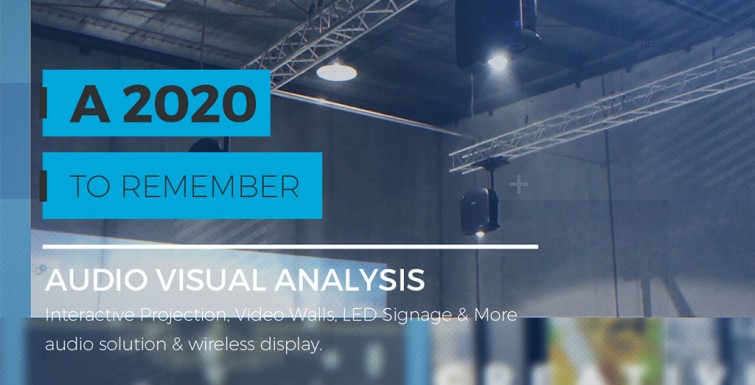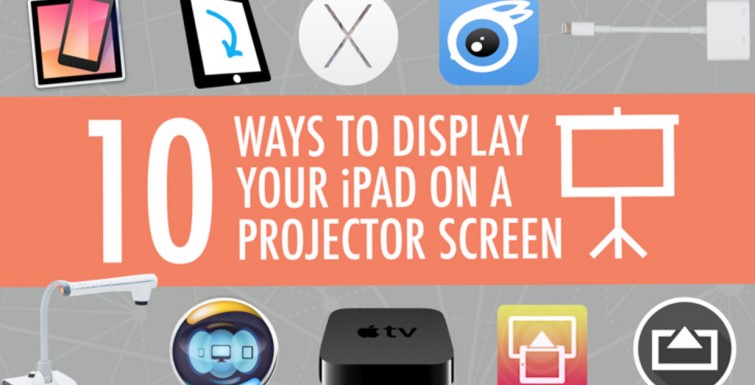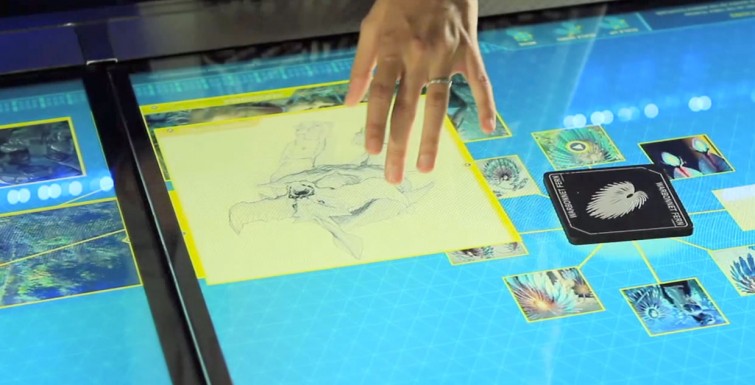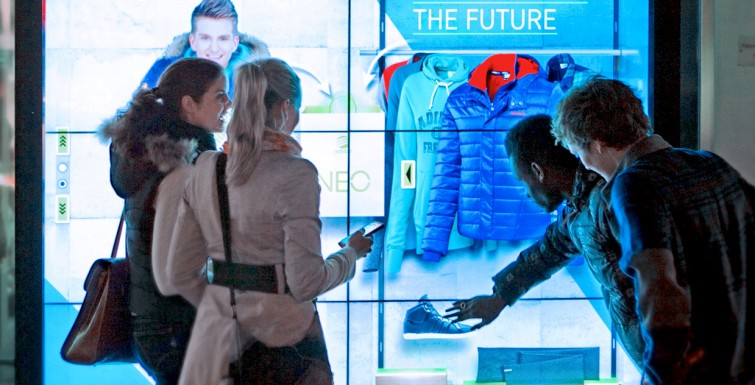We were pretty busy doing some super cool stuff in 2020. Here’s a video documenting some of our super-awesome triumphs.


We were pretty busy doing some super cool stuff in 2020. Here’s a video documenting some of our super-awesome triumphs.
Our 2020 Audio Visual Case Study Review has landed! Featuring ESTA, Toorak College, Presbyterian Ladies’ College and Ave Maria College, our Case Study Review takes a deep dive into some of our more recent AV-mazing installations of 2020.
![]() Click here to read the review in full.
Click here to read the review in full.
Last week, the team at Vision One visited Integrate in Sydney to learn more about the innovative range of upcoming technologies for the audio visual and information technology industry.
We checked in with our usual favourites and browsed through everything from holographic imaging technology to larger-than-life indoor and outdoor signage panel displays. Our pals at Quantum Sphere showed off their new Kaptivo Whiteboard Camera while the guys at Epson blew us away with their new range of lasers and and LightScene projectors.
The big take-aways from this year? Lamps are slowly disappearing from projectors, pixel pitches are smaller than ever, and if your conferencing and collaboration solution doesn’t play nice with every software platform, you’re in for a world of trouble!
Take a look at some of the highlights in the video walkthrough above!
We’ve done a couple of pretty cool things so far in 2018. Check out our 3D Photo Gallery Video to learn more!
panGenerator based in Poland have created a new kinetic audio video sculpture for Disney that takes the form of a Mickey Mouse inspired installation, which can be seen in action in the video embedded below.
Named the MICKEYPHON the installation has been created to listen for sounds in its surroundings and will then rotate into the direction. It then samples them to create and playback rhythmic patterns based upon the sound that it has heard.
Its developers explain a little more about the inspiration and functionality of this very unique interactive kinetic installation.
The visuals displayed on the custom cylindrical RGB LED matrix are audio-reactive, tightly integrated with the music output of the installation. The piece invites both children and adults to experiment with creating sounds using their voices,
clapping their hands or using the provided instruments and observe their influence on the kinetic, visual and audiatory output of the sculpture.

Jump over to the panGenerator website for more projects created by the team and more details about the MICKEYPHON which was inspired by Mickey Mouse and created for Disney.

Older, more traditional forms of learning resonate with students because they connect with something deep within our human psyche. They engage the full person, not just the part of the brain that can decipher words on a page. They evoke a time when all of our ancestors were more alike than different in their cultural practices.
Learning through movement and the senses is becoming easier to do as bulky, stationary technology has become more mobile. Also, we are seeing the beginnings of a trend in which technology is becoming practically invisible and more integrated into our everyday environments. Education technology such as tablets can help teachers and students rediscover traditional ways of learning by using touch, movement, sound, and visuality.
The oral tradition of teaching is not just about speaking out loud, but how one speaks and the narrative style used to convey meaning. It is how we shared our first stories and philosophical ideas.
One can start by having students listen to the amazing amount of free audio available through podcasting. Hearing the Dalai Lama in an interview can light up the history of modern China or ancient Buddhist thought in ways that are not available through reading.
One of my most memorable moments this summer was listening to Sir Ian McKellen recite Shakespeare on Marc Maron’s podcast. In this podcast, McKellen reminds us that much is lost in reading Shakespeare instead of hearing his work spoken and performed.
In addition to the free audio that is out there, I would also recommend that we let students listen to literature instead of reading it. I would even argue that, in some instances, the written versions of short stories, literature, and biographies (Barack Obama’s Dreams from My Father comes to mind) are the substitutes — not vice versa — for the richer, deeper experience of having the story read out loud.
Oral-based resources can work in other subjects as well. As an example, I think it is more illuminating for students studying physics to hear Richard Feynman speak than to read him. Feynman brought old, oral traditions of teaching to new heights through his vocal inflection and tone, narratives, and humor — all aspects of oral-based traditions for transmitting knowledge to those gathered around the fire or in the cave.
Long before humans began speaking to each other, our gestures and facial expressions served as ways of transmitting knowledge and expressing experiences, emotions and wisdom. Dance developed at this time, and may be older than the oral tradition of storytelling. Now, with movement and gesture-based technology such as Wii and Microsoft Kinnect, it is possible to re-introduce these ways of learning back into the classroom.
We often fall into the trap of judging our students’ performance by how well they can sit still, stand in line, and sit down when we tell them to. We should encourage direct learning through movement, gestures, and dance by first making our physical control of students less a priority of classroom management, and secondly, by exploring ways that education technology frees us to use gestures and movement as a means for learning.
Mobile technology frees teachers to re-think the use of learning spaces, allowing students to have more control over their own bodies and be more interactive with their environment. Also, with mobile technology, teachers can move beyond formal learning spaces into the world outside of the classroom.
Touch screen has made interacting with data, lists, and virtual environments more intuitive to human gestures — a main reason why kids take to tablets so readily. By incorporating these natural gestures and touch, the barrier between the knowledge in front of them and their learning nearly falls away.
Finally, educators should explore cutting-edge movement- and gesture-based education technology, as well as virtual reality tools such as Oculus Rift, so that we can return to learning methods that allow the whole person — the whole body — to become engaged with learning. Humans are wired to learn this way; it is not a “primitive” form of learning, but requires higher-level brain functioning and critical thinking.
One of the ways that we have long learned about the world around us is by direct observation. However, when we place a higher emphasis on reading as a direct source of knowledge, we indirectly affect our ability to learn by observation, and overall, inhibit our ability to learn visually.
Recent studies out of Brown University show that gamers have a higher capacity for visual learning than do non-gamers. I have taught students to better understand light, shadow, and color through digital photography and Photoshop. Developing observational skills by using interactive visual education technology, as well as digital photography, 3D modeling, and video assignments allow students to better understand their real-world environment.
Embracing digital technology that uses sight, sound, touch, and movement is a terrific way of rediscovering traditional cultural practices and will help us better educate the whole child.

Projecting your iPad on a large screen is great for demonstrations, simulations, explanations, and showing examples. There are several ways this can be done in the classroom. Scroll to the end of this post for a comparison chart.
If you don’t mind keeping your iPad in one spot, then a VGA adapter (for 30-pin Dock connector or for Lightning connector). Apple has made four types of adapters – determine which one you need. Or, a document or USB camera might work for you.
If you want to wirelessly transmit your device’s screen and audio so that you or your students can walk around the room, then it gets more complicated. You’ll tap into Apple’s AirPlay feature that is built into all iPad 2s and newer, including iPad mini. AirPlay works over Wi-Fi and requires all devices using it to be on the same network (unless you’re using the newest Apple TV and iOS 8–then you can use a peer-to-peer connection or if you’re using Mirroring360).
Apple TV is a small black box that can connect to a projector. iPad can mirror wirelessly to Apple TV using AirPlay. Apple TV only outputs HDMI. Your projector might not have HDMI input. If that’s the case, you’ll need an HDMI to VGA adapter like the Kanex ATVPRO. Read more about Apple TV in classrooms.

If you already have a computer connected to your projector, you should look into using software to turn that Mac or Windows PC into an AirPlay receiver. You can download and try for free AirServer, Annotate Mirror Client, iTools, Mirroring360, Reflector 2, or X-Mirage. The software runs on your computer and allows devices to mirror iPad to the computer screen. Since the computer is connected to a projector, then the iPad shows on the projector. I’ve written lots more about both AirServer and Reflector.

In my visits to various schools, I’d say that Apple TV, AirServer, Reflector, and X-Mirage work about 50% of the time. That’s because AirPlay requires the device and the computer or Apple TV to be on the same network (unless you’re using the newest Apple TV and iOS 8). Often schools have different networks for mobile devices and for PCs so AirPlay won’t work. Also, AirPlay requires specific ports to be open on the network for Bonjour (and frequently they are not configured to be open).
Mirroring360 has a feature called Mirroring Assist. It can work without the need to open ports for Bonjour. That means Mirroring360 can work on your school’s network, even when other AirPlay solutions do not. Another feature of Mirroring Assist is the option to turn off the broadcasting of your computer on AirPlay. Instead, devices can be paired with your Mac or PC via a QR code. This is a very welcome feature in schools with long lists of computers under the AirPlay menu.
Even if your network allows for AirPlay connections, it also needs to be reliable. Many teachers experience slow and dropped AirPlay connections, which can make mirroring a frustrating experience. It’s a good thing there are free trials of each of the software mirroring solutions so you can test your school’s setup before purchasing.
If your Wi-Fi network won’t cooperate with AirPlay, you should check out iTools. It’s free software for Windows PCs that will mirror to a computer using your device’s charge/sync cable. iTools Live Desktop feature is buggy and might not work on your computer, and there is no help documentation.
After upgrading to to OS X 10.10 Yosemite, Mac users can mirror their iPad’s screen using a Lightning cable. iPad will show up as a camera source in QuickTime.

When you mirror your screen, it’s a great opportunity to use your iPad as a document camera! You’ll want to buy or rig up some sort of stand to use iPad as a visualizer. I wrote about the Justand v2 and other options in this post, including apps that let you draw and annotate over the image.
I maintain a chart that compares the methods of displaying iPad’s screen on a projector. Click the image below to download the PDF.

According to a new market research report “Interactive Display Market by Product (Interactive Kiosk, Whiteboard, Table, Video Wall, Monitor), Application (Retail, Education, Healthcare, Entertainment), Panel-Size (17″ – 32″, 32″- 65″, Above 65″), & Geography – Global Forecast to 2020″, published by MarketsandMarkets, the total interactive display market is expected to reach $14,964.5 Million by 2020, at a CAGR of 12% between 2015 and 2020.
The Interactive Display Market is expected to exhibit high growth in the next five years. There is growing adoption of interactive displays in applications such as retail, hospitality, industrial, healthcare, government/corporate, transportation, education, entertainment, and other applications. The other applications such as residential and, military & defense are using interactive displays to train their personnel.
This report provides a detailed analysis of the overall interactive display market and segments the same on the basis of on product, application, panel size, and geography.
The objective of the research study was to analyze the market trends for each of the industries, growth rates of the various applications (retail, hospitality, industrial, healthcare, government/corporate, transportation, education, entertainment, and others) and the demand comparison of the products in the interactive display market such as interactive kiosks, interactive whiteboards, interactive tables, interactive video walls, and interactive monitors.
Apart from the market segmentation, the report also covers the Porter’s five forces analysis, the market’s value chain with a detailed process flow diagram, and the market dynamics such as drivers, restraints, and opportunities in the overall interactive display market.
This report profiles all major companies involved in the interactive display market such as Samsung Display Co., Ltd. (South Korea), LG Display Co., Ltd. (South Korea), NEC Display Solutions Ltd. (Japan), Elo Touch Solutions, Inc. (U.S.), Planar Systems, Inc. (U.S.), Horizon Display (U.S.), GestureTek, Inc. (Canada), GDS Holdings S.r.l. (Italy), Interactive Touchscreen Solutions, Inc. (U.S.), and Crystal Display Systems (England).
MarketsandMarkets also has a new study, detailing how the global digital signage market is expected to grow at a CAGR of 8.18% between 2015 and 2020, from $14.63 Billion in 2014 to $23.76 Billion in 2020. This report on global market analyzes the digital signage value chain, giving a clear insight into all the major and supporting segments of the industry. The market has been segmented on the basis of type, application, and major geographies (North America, Europe, APAC, and RoW). This report also evaluates market trends and technologies and market dynamics such as drivers, restraints, and opportunities along with the industry’s challenges.
The global market report profiles some of the key technological developments in the recent times. It also profiles some of the leading players in these markets and analyzes their key strategies. The competitive landscape section of the report provides a clear insight into the market share analysis of key industry players.
The major players in global digital signage market include, according to these reports, NEC Display Solutions (Japan), Samsung Electronics Co. Ltd. (South Korea), LG Display Co., Ltd. (South Korea), Sharp Corporation (Japan), Sony Corporation (Japan), Panasonic Corporation (Japan), AU Optronics Corp. (Taiwan.), Planar Systems, Inc. (U.S.), Adflow Networks (Canada), and Omnivex Corporation (Canada).

The evolution of digital signage followed quite a linear path to where we are today. We first saw static imagery used for basic signage such as restaurant menus – at the time this was quite a breakthrough. It wasn’t long until video content was part of the mix. Explosive growth of video content was driven by affordable management and authoring tools that were increasingly easy to use. The next step in this evolutionary progression – and we’re already heading down this path — is interactivity.
The single-most important tool driving the next wave of interactive digital signage is HTML5, which opens up near-limitless possibilities for customer engagement. It enables a rich viewing experience that builds on the interactivity popularized by today’s smartphones and tablets. HTML5-authored content takes advantage of touch interactivity, including the ability to tap, swipe, pinch and zoom. This is an important breakthrough, as people are now engaging with signage displays in the same way they interact with their own personal devices. This marks a significant point in the evolution of digital signage. People are no longer viewers of digital signage, they’re participants. The ability of the viewer to self-navigate signage content ensures a highly personalized experience, creating a vital touchpoint between proprietor and customer. They’re engaging directly with the content and as a result their comprehension and retention of the signage increases dramatically. This increased brand engagement is music to marketers’ ears because in most cases deeper brand engagement translates to increased sales.
Beyond the touch interaction described above, HTML5 delivers other extremely rich experiences for applications like the “endless aisle” in retail, powerful wayfinder solutions and real-time social media applications. And what’s especially impressive is that we’ve really just begun to see what HTML5 is capable of. The new generation of media players allows for the use of the flexible HTML5 authoring combined with superior media handling. The new media processors allow for smooth video playback, chroma/luma keying (green screen-type media composition) eliminating the typical “browser” experience with HTML5 video playback. But regardless of what the future holds, it’s clear that HTML5 is changing the way proprietors use digital signage to engage their customers.
We’ve all come to learn how impactful technology is on the classroom. Often, when teachers are willing to make the transition, students can develop engaging and responsive habits from learning with technologies.
The above video expresses the imagination of its content creator, pointing to a classroom of the future. And believe it or not, this fictitious environment is really not all that far away as you may think!
Connect directly from your device to a projector’s video cable. Click to find out which of the four possible adapters is the one you need.